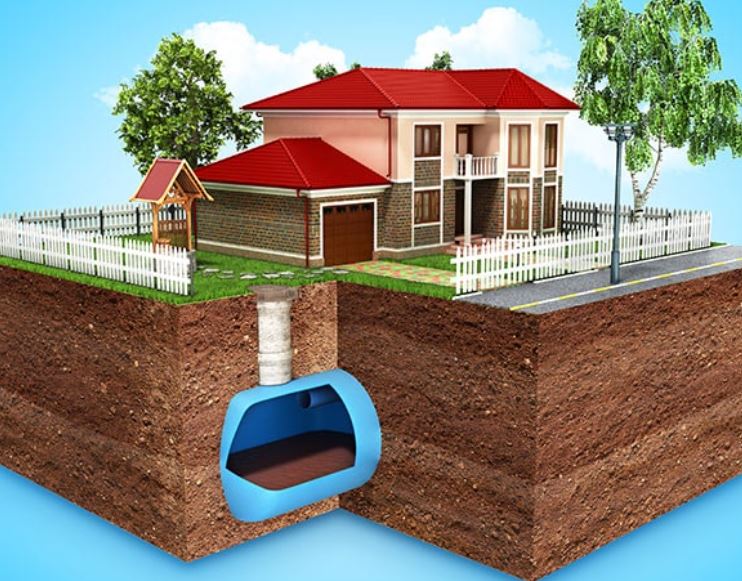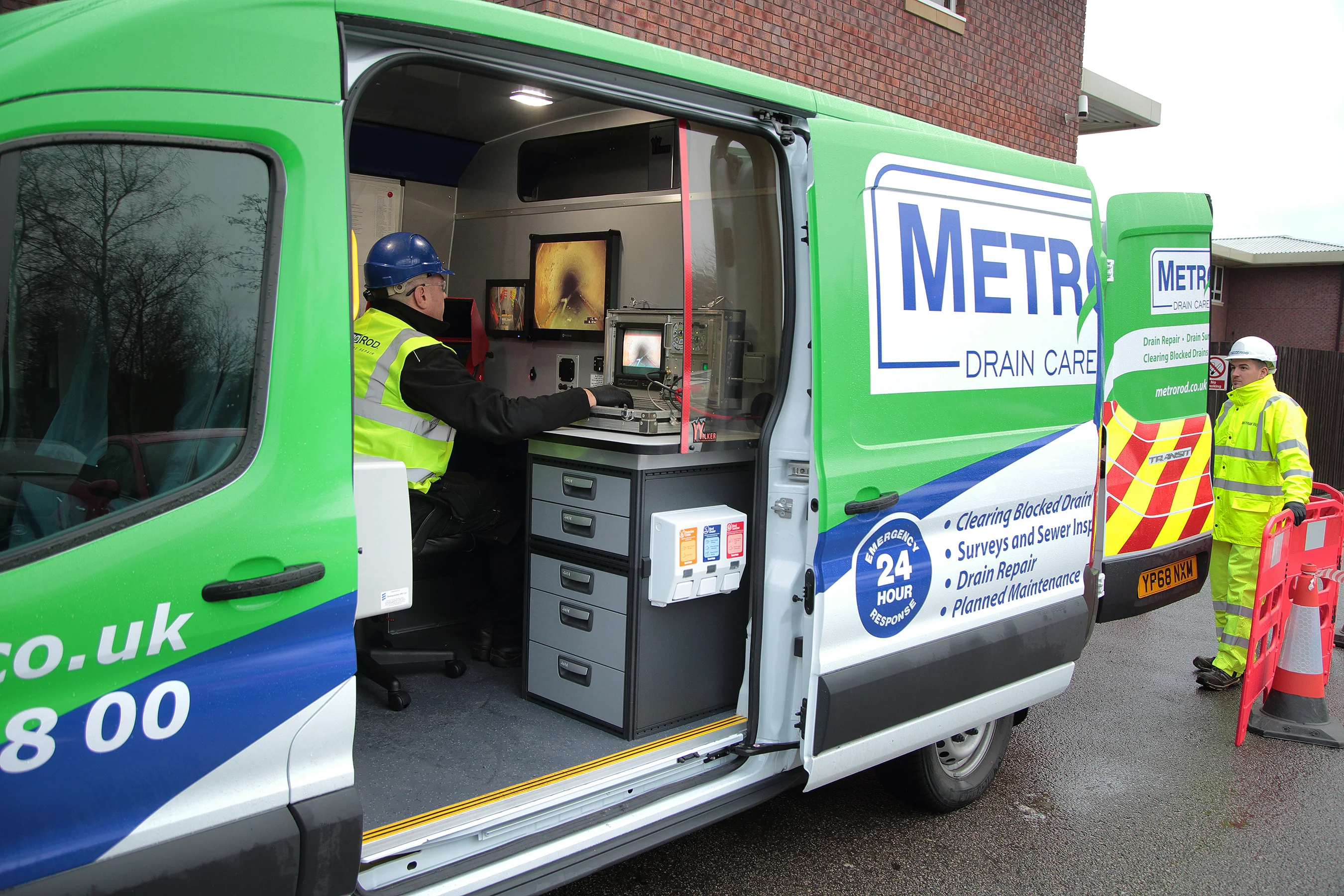What is a Septic Tank?
A septic tank consists of one or more concrete or plastic tanks of between 4000 and 7500 litres (1,000 and 2,000 gallons). One end is connected to your property via an inlet wastewater pipe and the other to a septic drain field. The design of the tank usually incorporates two chambers, each equipped with a manhole cover, and separated by a dividing wall with openings located about midway between the floor and roof of the tank.
Septic tank systems have been widely used in rural areas of the UK since the early 1900s for areas where mains drainage is not available or the cost of connection is prohibitive.
A septic tank receives all of the wastewater from the house, including toilet, laundry, bathroom and kitchen waste. The main purpose of a septic tank is to separate the solid material and allow the sludge formed to undergo a process known as anaerobic digestion. This has the effect of reducing the sludge volume and therefore the frequency of septic tank emptying by vacuum tanker.

It's all change in 2020! What do the latest septic tank regulations mean for you?
Septic tank regulations... It's not an opening phrase that would make many people read on, but if your property has a septic tank - or if you are buying a property with a septic tank, I'm afraid you might need to.
Given what goes into a septic tank, it's understandable why the Environment Agency is keen to make sure that it stays in the tank, instead of floating down the local stream. So, there are a lot of rules and regulations surrounding septic tanks - from where you can put them, to where the water that leaves the tank can go. Some are best practice guidelines, but others are legislation, and you could find yourself in trouble with a hefty fine if you ignore them!
The latest regulations came out in 2015, and are called 'General binding rules: small sewage discharge to a surface water'. It doesn't exactly trip off the tongue, but its a very important document for many property owners.
Once upon a time, you could 'discharge' the separated wastewater from within the septic tank through one of two ways:
1) To a drainage field or soakaway system - here, the waste water percolates through holes or slots into the pipework, into the surrounding sub-soils. This provides a form of treatment of the water, and it allows the waste water to disperse safely without causing a pollution.
2) To a watercourse - the waste water would flow through a sealed pipe straight to a local watercourse such as a stream or a river.
So, what's changing?
In a nutshell, you can no longer do no. 2 above. The reason for this is because the 'quality' of the waste water is no longer considered clean enough to flow straight into local watercourses without causing pollution.
Now, this isn't an entirely new rule. For some years now, property owners have not been allowed to install a new septic tank which discharges to a watercourse. However, if your property already had a septic tank discharging to a watercourse, unless the EA identified that it was causing a pollution, you were able to carry on.
This all changes in 2020. If your property's septic tank discharges to a watercourse, not a soakaway or drainage field, you must replace or upgrade the system by 1st January 2020 - or before that date if you are selling your property.
What are the options?
There are two main ways in which you can comply with the new regulations:
Swap your septic tank for a sewage treatment plant - sewage treatment plants produce a cleaner form of water, and it's considered clean enough to discharge straight to a watercourse
Install a drainage field or soakaway system - this will take the waste water from your septic tank, and disperse it safely into the ground without causing pollution.
It's not all doom and gloom, there's still plenty of time to make the switch. And let's face it, no one wants to think about the inhabitants of the local streams or rivers hanging out in the dirty water from septic tanks, so it's a positive change for the environment.
What to do next... Call Metro Rod Bedford...
Metro Rod has been installing, maintaining and emptying septic tanks for years and are fully conversant with the laws and regulations surrounding them. So if you have a property with a septic tank or are thinking of buying or selling one, get in touch with Metro Rod Bedford today.

Talk to your local Metro Rod specialist
We are always happy to arrange a free site assessment and no obligation quotations for any work you might need. Alternatively, you can call our emergency hotline number on 0800 66 88 00
Get in touch Drainage Services

